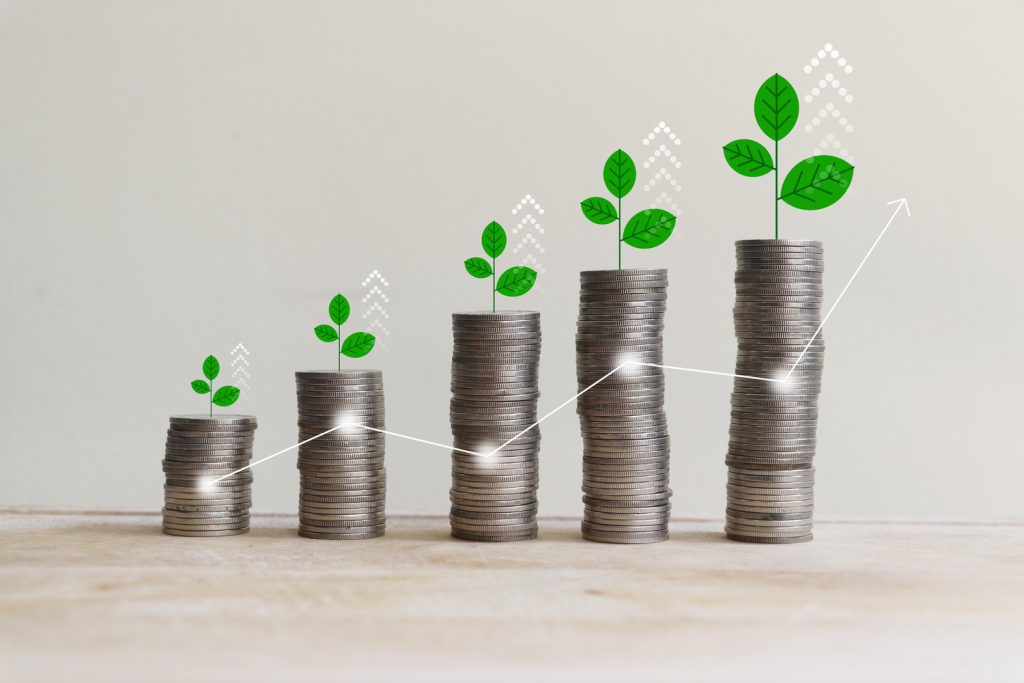Whether you're new or experienced in finance, it's important to always look for new opportunities and investment options. You should also have a solid plan for how to stay successful.
When it comes to investing, many people choose to invest in dividends. But what exactly is a dividend? There are two main types: cash dividends and stock dividends. Cash dividends are the most popular way for companies to share their profits with shareholders, while stock dividends are less common but still worth talking about and considering.
In simple terms, a dividend is a share of a company's earnings that is given to all the shareholders. Cash dividends involve receiving money, while stock dividends involve receiving additional shares of the company's stock. It's important to understand the characteristics of each type and be aware of any risks associated with them.

What Is A Cash Dividend?
This dividend is normally distributed to stockholders, of course in cash, out of a company's earnings. So, imagine you have 2 shares in company X. The board of this business decides to pay 1 USD a share per year. Now, as a (smart) investor, you have 2 USD in dividends.
Unfortunately, this transfer of economic value (from a company to investors) causes a drop in the stock price of the shares, which is something you own. Another negative aspect of cash dividends is that they are taxable – every person who receives them should pay tax on the money.
Cash Dividend Benefits
Here are the main benefits of cash dividends compared to stock dividends:
Immediate Liquidity: Cash dividends provide investors with instant cash that they can use for various purposes, such as paying bills, reinvesting in other assets, or covering expenses.
Flexibility: Cash dividends offer flexibility as investors have the freedom to use the money as they see fit. They are not locked into holding specific stocks and can allocate the cash according to their individual financial goals and needs.
Predictable Income: Cash dividends provide a predictable income stream for investors. They can rely on regular dividend payments to supplement their overall investment returns and meet their financial obligations.
Reduced Risk: Cash dividends offer a degree of risk mitigation as they provide a tangible return in the form of cash. This can be especially beneficial during market downturns or when there is uncertainty surrounding the future performance of a specific stock.
What Is A Stock Dividend?
When a company declares a stock dividend, it increases the number of outstanding shares by distributing a certain percentage of additional shares to existing shareholders. For example, if a company declares a 10% stock dividend, a shareholder who owns 100 shares would receive an additional 10 shares.
Stock dividends are usually expressed as a percentage or ratio, indicating the proportion of additional shares to be distributed. The actual value of each shareholder's investment remains the same, but their ownership stake in the company increases.
One important aspect of stock dividends is that they do not result in an immediate cash inflow for shareholders. Instead, they receive more shares, which may have potential future benefits such as capital appreciation and the potential to receive larger cash dividends in the future.
Stock Dividend Benefits
Here are the main benefits of stock dividends compared to cash dividends:
Additional Shares: Stock dividends provide investors with additional shares of the company's stock instead of cash. This increases their ownership stake in the company, allowing for potential capital appreciation if the stock price rises.
Tax Advantages: In many jurisdictions, stock dividends are generally not taxed until the shares are sold. This can be advantageous for investors as they can defer their tax liability, potentially allowing for tax-efficient wealth accumulation.
Reinvestment Potential: Stock dividends can be reinvested back into the company through dividend reinvestment plans (DRIPs). By automatically purchasing additional shares with the dividend, investors can compound their investment and potentially benefit from future growth.
Enhanced Long-Term Returns: If a company consistently issues stock dividends and experiences growth over time, the cumulative effect of receiving additional shares can lead to increased wealth accumulation and potentially higher overall investment returns.
Other Types Of Investments That Generate Dividends
Apart from stocks, there are several other types of investments that can generate dividends. Here are some common examples:
-
Bonds
Bonds are debt securities issued by governments, municipalities, or corporations to raise funds. When you purchase a bond, you are essentially lending money to the issuer in exchange for periodic interest payments, which are considered bond dividends.
The interest rate, also known as the coupon rate, is predetermined at the time of issuance. Bondholders receive regular interest payments until the bond matures, at which point the principal amount is repaid.
-
Mutual Funds
Mutual funds pool money from multiple investors to invest in a diversified portfolio of assets, such as stocks, bonds, or a mix of both. Some mutual funds focus on dividend-paying stocks or bonds with the goal of generating income for their shareholders.
The dividends received from the underlying investments are distributed to mutual fund shareholders in proportion to their holdings.
-
Exchange-Traded Funds (ETFs)
ETFs are investment funds traded on stock exchanges, similar to stocks. Dividend-focused ETFs specifically target stocks or other income-generating assets that pay dividends.
These ETFs aim to track dividend-focused indices or employ strategies to generate dividend income. Shareholders of dividend-focused ETFs receive dividend distributions based on the underlying assets held by the fund.
-
Real Estate Investment Trusts (REITs)
REITs are companies that own, operate, or finance income-generating real estate properties, such as office buildings, shopping malls, or apartments.
By law, REITs are required to distribute a significant portion of their taxable income as dividends to shareholders. Investors in REITs receive dividends from the rental income generated by the properties held by the REIT.

Why Companies Are Not Always Pay Dividends?
Companies may choose not to pay dividends for several reasons:
Reinvestment of Profits: Companies often retain earnings to reinvest in their own growth and expansion. By reinvesting profits back into the business, companies can fund research and development, acquire new assets, expand production capacity, or pursue strategic opportunities.
Capital Requirements: Some industries, such as technology or biotechnology, require substantial capital investments to fund research, development, and innovation. These companies may choose to retain earnings to finance ongoing projects and maintain a competitive edge in their respective industries, rather than distributing dividends.
Debt Reduction and Financial Stability: Companies with high levels of debt may prioritize using their earnings to pay down debt and improve their financial position.
Cyclical or Seasonal Nature of Business: Companies operating in cyclical industries, such as manufacturing or commodities, may experience fluctuations in earnings due to market conditions. During downturns or periods of low profitability, companies may choose to conserve cash and retain earnings to navigate through challenging times rather than paying dividends.
Shareholder Preferences: While dividends can be attractive to certain investors seeking regular income, others may prioritize capital appreciation or long-term growth potential. Companies may consider the preferences of their shareholder base and focus on strategies that align with their investors' expectations.
Tax Considerations: Companies may opt to retain earnings and implement alternative strategies, such as share buybacks or capital appreciation, which may have different tax implications for shareholders.
Why To Invest If There Are No Immediate Dividends?
While dividends can be an attractive aspect of certain investments, it's important to note that there are several other motivations for investing, even in the absence of dividends. Here are some key reasons why investors choose to invest even if there are no immediate dividends:
Capital Appreciation: Investors may be motivated by the potential for their investment to increase in value over time. This is known as capital appreciation. By investing in assets like stocks, real estate, or growth-oriented companies, investors aim to benefit from the potential for their investment to grow in value.
Long-Term Wealth Accumulation: Investing with a long-term perspective allows individuals to build wealth over time. Even if an investment does not provide immediate dividends, it can still contribute to overall portfolio growth and provide financial security in the future. This approach is often adopted by investors who prioritize long-term financial goals, such as retirement planning or funding higher education.
Reinvestment and Compound Growth: Instead of receiving dividends as cash, some investors choose to reinvest their earnings back into the investment. This strategy can potentially harness the power of compounding, where the reinvested earnings generate additional returns. Over time, this compounding effect can significantly enhance the investment's value.
Tax Advantages: Some investments, such as certain types of retirement accounts or tax-advantaged savings plans, offer tax benefits that can outweigh the need for immediate dividends. Investors may choose these investments based on the potential for tax-deferred growth or tax-free withdrawals in the future, even if dividends are not a primary consideration.
FAQs
What is dividend yield?
Dividend yield is a financial ratio that represents the annual dividend payment as a percentage of the stock price. It helps investors evaluate the income potential of an investment relative to its price.
How can I find dividend-paying stocks?
You can identify dividend-paying stocks by using financial news platforms, stock screeners, or consulting with financial advisors who can help you identify companies with a history of consistent dividend payments.
Can dividend investing be a source of passive income?
Dividend investing can provide a source of passive income, as regular dividend payments can supplement other sources of income. However, it's important to monitor and review investments periodically to ensure dividend sustainability and adapt to changing market conditions.
How do I evaluate the sustainability of dividends?
Evaluating the sustainability of dividends involves assessing a company's financial health, cash flow generation, earnings stability, dividend payout ratios, and industry dynamics. Analyzing dividend history, payout ratios, and management's commitment to dividend payments can provide insights into sustainability.
What are the risks of dividend investing?
Dividend investing is not without risks. Companies may reduce or suspend dividend payments due to economic downturns, financial challenges, or other factors. Additionally, dividend-focused investments can be influenced by interest rate changes, market volatility, and sector-specific risks.
What is a dividend reinvestment plan (DRIP)?
A dividend reinvestment plan (DRIP) allows investors to automatically reinvest their dividend payments back into purchasing additional shares of the dividend-paying stock, potentially compounding their investment over time.
